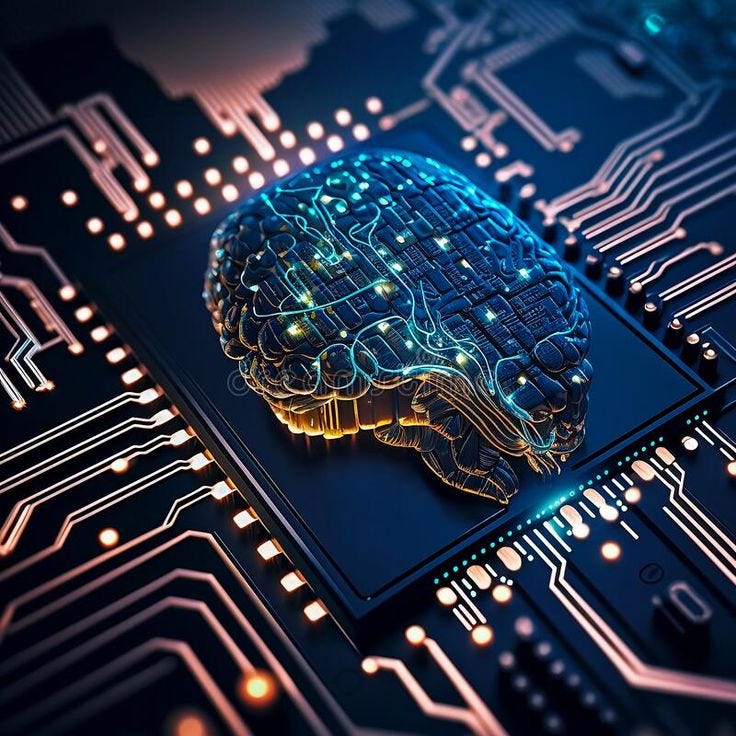
Artificial intelligence (AI) has become a hot topic in today's tech-driven world. Everyone is discussing the future of AI everyone is very interested in this new and exciting field. But the question is what is AI? Where and why are we using it? why it is becoming so important? We all have so many questions about this new field new technology. But this blog will answer almost every question about AI, This blog aims to unmask AI by explaining its fundamentals, types, applications, and ethical considerations. Even if you're an enthusiast, a professional, or just curious about the future, this blog will provide you with every bit of information about AI with a comprehensive understanding
What is AI?
Artificial Intelligence is made by humans, It is made to help humans, It is the reproduction of human intelligence in machines that are programmed to think, learn, and execute like humans. these intelligent systems can do tasks that humans can do and faster than humans, such as visual perception, speech recognition, decision-making, language translation, and many more things.
Key Components of AI
- Machine Learning (ML):
A branch of artificial intelligence called machine learning (ML) is concerned with creating a system that allows computers to learn from and make decisions similar to those made by humans using data. It gets more adept at producing precise forecasts the more data it has.
2. Natural Language Processing (NLP):
NLP is a branch of artificial intelligence (AI) that facilitates computer comprehension of human language. By using rule-based modeling of human language in conjunction with statistical modeling, machine language, and deep learning, NLP enables computers and other digital devices to recognize, understand, and generate text. By using visual information from the outside environment.
3. Computer Vision:
Computer Vision can make sense of things and make decisions. This covers a wide range of tasks, including object detection, facial recognition, and picture and video recognition.
AI can be classified into three types based on its capabilities:
1.Narrow AI (Weak AI):
Narrow AI is designed to do a specific task, like facial recognition or some internet exploration. It performs tasks under a limited set of constraints and cannot perform tasks outside of its designated function. Examples include virtual assistants like Siri and Alexa.
2. General AI (Strong AI):
The concept of “general artificial intelligence” (AI) defines systems that, like humans, are capable of understanding, acquiring, and applying knowledge to a variety of tasks. These systems have not yet been implemented and are just theoretical.
3. Super AI:
Super AI is an amount of intelligence that is better to human intellect in all domains, such as creativity, emotional intelligence, and problem-solving skills. It’s still only a science fiction premise that hasn’t come to pass.
Applications of AI
AI is transforming various industries and aspects of daily life. Here are some notable applications:
1. Healthcare:
AI is changing healthcare through its use in predictive analytics, customized medication, and diagnostics. For example, AI systems can accurately and early identify diseases by analyzing medical photos.
2. Finance:
AI is used in the financial industry for chatbot customer support, algorithmic trading, and fraud detection. Large datasets can be analyzed by AI systems to find patterns and estimate market trends.
3. Education:
Artificial intelligence (AI)-powered educational solutions enable personalized learning experiences, automated administrative tasks, and intelligent tutoring systems that adjust to the specific demands of each student.
4. Transportation:
AI-powered autonomous cars are starting to happen. By using artificial intelligence (AI) to drive, make judgments, and avoid obstacles, these cars promise to improve safety and efficiency in transportation.
5. Retail:
Through the use of virtual assistants, inventory management optimization, and tailored suggestions, artificial intelligence (AI) improves the retail experience.
Ethical Considerations in AI
As AI continues to advance, it raises several ethical concerns that need to be addressed:
1. Bias and Fairness:
Biases found in data used for training can be inherited by AI systems, producing unfair and biased results. Ensuring AI algorithms are trained on a variety of sample datasets is essential.
2. Privacy:
Privacy issues may result from the use of artificial intelligence in data analysis and monitoring. It is crucial to protect personal information and make sure that data utilization is transparent.
3. Job Displacement:
AI task automation may result in job displacement in several industries. It’s critical to take the workforce’s influence into account and put up programs for upskilling and reskilling.
4. Accountability:
It might be difficult to assign blame for judgments made with AI. To guarantee responsible AI development and use, certain rules and regulations are required.
The Future of AI
The potential for AI is enormous. More complex and powerful systems will result from ongoing developments in AI research and development. To guarantee that AI serves society as a whole, it is imperative to strike a balance between innovation and ethical issues.
Conclusion
Our world is changing due to the revolutionary technology known as artificial intelligence. We can better appreciate the potential and problems it brings if we have a greater knowledge of its fundamentals, kinds, applications, and ethical implications. Maintaining awareness and involvement in AI’s growth will be essential to safely use all of its potential as it develops.
No comments:
Post a Comment